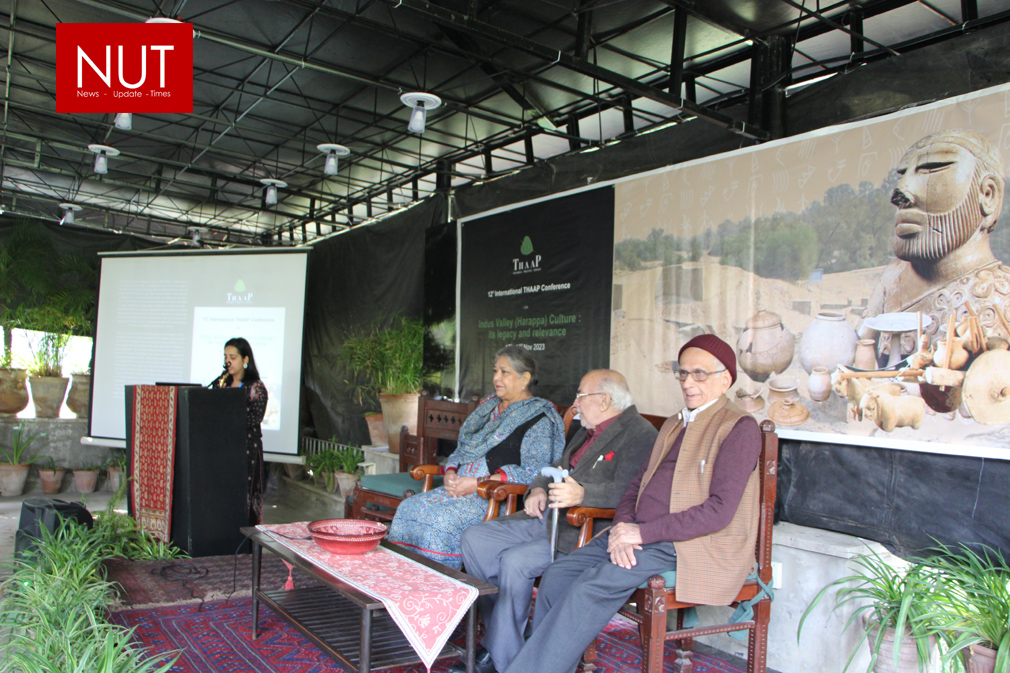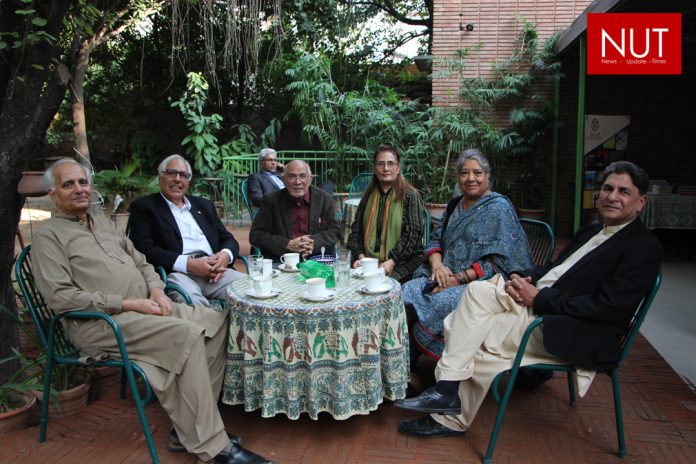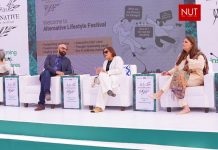Lahore (Qasim Ali)
12th Annual Thaap conference entitled *”Indus Valley (Harappa) Culture: Its legacy and relevance* enriched the audience with insightful research papers here at Thaap secretariat in gulberg lahore on friday 17th November. The first day featured an inaugural session, exhibition, and three paper reading sessions, which were attended by leading architects, archeologists, historians, cultural experts, academics, and students.
In the opening session Ar. Mehreen Mustafa, Honorary Secretary to THAAP, welcomed the conference participants, she revisited the incredible journey of THAAP, the objectives of the organization and introduced the conference program. Prof Pervaiz Vandal in his opening remarks spoke of the Harappa Culture in general. He also stressed that the decentralized governance system, a nonviolent society based on trade holds a great lesson for our contemporary problem of urban sprawl and conflict resolution. This was followed by the painting exhibition by Ar Abdullah Ali Kazmi on the theme of dance, women, and the moon.
While sheding light on the topic of the conference, Prof. Pervaiz Vandal said that Harappan cilization has an expanse area of nearly 1.6 million square meters, which is more that whole Eastern Europe and double than the Egypt. There is dire need to discuss, expolre , research and work on this ancient civilization as it is one of the most significant civilization, which existed conflict free without any major war for a span of several centuries thanks to its highly civilised conflict dispute resolution system. He mentioned that active trade activity was the main source of earning of Harappan inhabitants which need peace as foremost component.He concluded with the strong remarks on *revitalise of our rivers and water channels* He said that there is no need of bundle of funds , it can be done at low management level with strong will and it will benefit the whole region in so many ways, like in the past time of Harappa or indus valley civilization with zero transportation expenditures.
Renowned historian and archaeologist Dr. Saif ur Rehman Dar was chief guest of the inaugural session. He talked about role of Punjab archaeology department and stressed on the critical role it should reclaim when it comes to excavation and exploration of sites related to Harappa. He acknowledged the efforts of THAAP for organising a two days comprehensive conference on Harappa civilization.
The three paper reading sessions were chaired by prominent archaologists, historians, Prof Dr. Mohammad Rafique Mughal, Mian Ijaz ul Hasan, and Shahid Nadeem.
The first paper reading session was chaired by Prof Dr. Mohammad Rafique Mughal professor emeritus of archaeology, Boston University USA, former DG of Archaeology Pakistan. Presentations were by Dr. Tohid Chattha on the historical contextualization of gender dynamics in Punjab. Dr. Tohid presented his paper in Punjabi language and explored the Gender Dynamics in Punjab from Punj Phol Rani of Harappa in Hir Siyal. Dr. Tohid described the folk tales related to Punj phul rani an artefact of Harappa civilization and status of women in Harappan civilization. He stressed to establish Harappan study centre at university level so that young students can explore the Harappa culture in more detail and decifer the hidden language, culture and civilization further.
Prof Dr Faraz Anjum spoke on the exploration Pakistani identity through the ruins of Harrapa. He drawed a comparison of cultural identity in the context of Harappa civilization. The topic of his research was “Dancing Girl or Bearded priest on Pakistani identity through the ruins of Harappa civilization.” He presented a detailed discourse about cultural identity before and after the creation of Pakistan. He presented references of leading archaeologists, historians, and literary figures and enriched the listeners with great insights.
Cultural exhibition *Women, Moon and Dance* by Ar. Ali Abdullah Kazmi, delves into fascinating display between women, dance and is inspired by regional civilization. The rhythmic movements and graceful posters depicted in the exhibition provided glimpses into the cultural and spiritual significance of dance in the regional civilization.
Mian Ijaz ul Hasan, educationist, artist, art critic and political activist chaired the second session in which Dr Anila Zulfiqar presented her work on the comparison of figurines from Mohenjodaro and Ghoray Shah, Ar Waqas Manzoor on Punjabi folk toys as cultural artefacts, and Prof. Dr. Kanwal Khalid on the structural analysis of the comparison of Indus valley and easter island scripts.
Shahid Nadeem, leading playwright and executive director of Ajoka theatre chaired the third paper reading session with presentations by M Wali Ullah & Dr. Zakirullah ( presented by Sohial Khan) on the field survey of Harrapan and Pre-Harrapan sites in DG Khan, and Syed Hassan Haadi & Syeda Fatima, on the living culture of Indus Valley (Harrapa). Each paper reading session was followed by a lively back and forth on the topics presented and the first day closed with tea at the end of the day.







